Machu Picchu, the mysterious 15th century “Lost City of the Incas” in between two Peruvian mountains was voted one of the New Seven Wonders of the World. This UNESCO World Heritage Site and major archaeological site was a bucket list and dream come true trip for me. Our girls’ trip consisted of me with three other girlfriends, two teens and a tween. This was our experience riding the train and bus to Machu Picchu, only visiting the citadel, and not hiking the nearby mountains.
Getting There
Contrary to popular belief (and what I initially also thought a few years ago), visitors have other ways to visit Machu Picchu beyond hiking for days. It was a pleasant surprise to find it was easily accessible by trains and buses. Some visitors do a day trip to Machu Picchu from Cusco which was at least 3 hours and 20 minutes away by train. The Poroy station is actually another 25 minutes from Cusco by road.
We recommend staying in the Sacred Valley, in towns like Urubamba or Ollantaytambo, at least a day before and a day after the Machu Picchu day trip. This will give you a chance to see some interesting attractions in the Sacred Valley like the Ollantaytambo ruins. It was also a good way to adjust slowly to the altitude in the area.
We boarded our train to Aguas Calientes, a town located at the base of Machu Picchu, at the Ollantaytambo Station where we were staying for a few nights. This train ride was an hour and 30 minutes. Visitors have a couple of train company options: Inca Rail or Peru Rail.
Both companies offer almost the same type of service and use the same track but times may vary. Buy your tickets well in advance online since there are assigned seats. We couldn’t choose our seats during the reservation. But, you can request for seat changes by emailing [email protected]
We rode on Peru Rail which was such a great experience. Splurge on the train with vista domes or the 90 panoramic windows getting there. It was very much worth it. They gave us drinks and snacks and the seats were comfortable.
If you want to travel in style and luxury and have the budget, the Belmond Hiram Bingham will make you feel like you traveled back in time to the 1920s elegance. This train also includes Machu Picchu entrance ticket, bus ride and a tour guide. The views were amazing as we passed through farmlands and eventually into a rainforest. Somewhere along the way, we saw snow covered mountaintops and some birds flying.
Aguas Calientes
This mountain town and gateway to Machu Picchu was also known as Machu Picchu Pueblo. Located along the Urubamba river, it was built for tourists with many hotels/hostels, restaurants and souvenir stores.
It was a wonderful place to walk around and was quite charming. I would love to stay here and explore when we return. There is also a hot springs, Machu Picchu museum, and nearby waterfalls here.
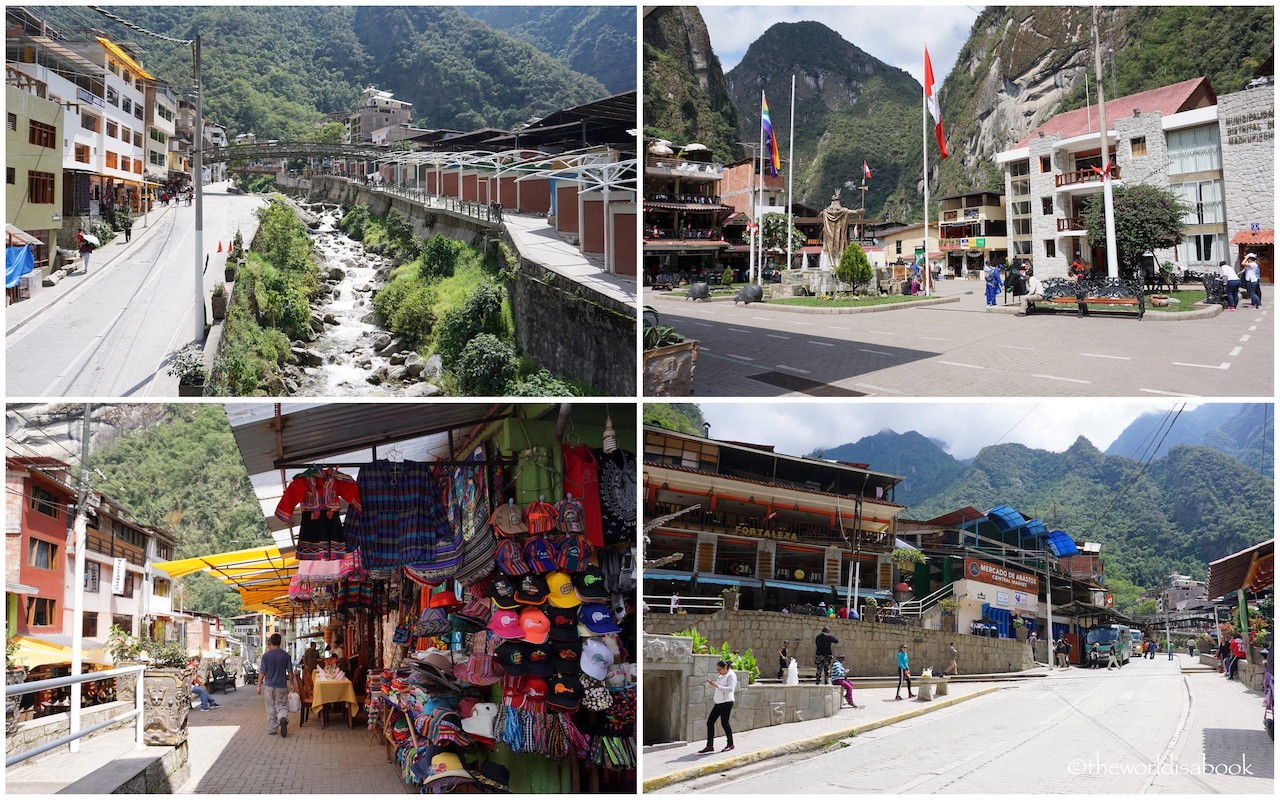
Look for two Machu Picchu signs for the ideal tourist photos. One sign was at the main square by the cultural center and the other one was down the street from the bus stop.
After getting off the train station, follow the path towards the bridge and cross over into town. Look towards the left and you’ll see buses lined along the road getting ready to leave for Machu Picchu. The bus ticket booth was nearby.
The buses leave every 10-15 minutes, from 5:30 AM to 3:30 PM. The last bus from Machu Picchu leaves at 5:30 PM. Buy water, snacks at the nearby stores before getting on the bus.
Machu Picchu New Rules
The Peruvian authorities enacted new rules for entering Machu Picchu to control the crowd entry in 2017 and added more restrictions in 2019. Only 5,940 tickets are sold per day. There are nine different hourly entry shifts starting at 6 AM and until the last entry between 2 PM – 3 PM. Maximum time inside the citadel is four hours but from what I’ve read, this isn’t really enforced.
Re-entry with the same ticket is not allowed anymore. Entrances used to be in four-hour shifts. This was how we were able to return after going out to use the restroom and eat. Visitors must now buy an additional ticket for each re-entry. Visitors are restricted to four-hour stays in the complex.
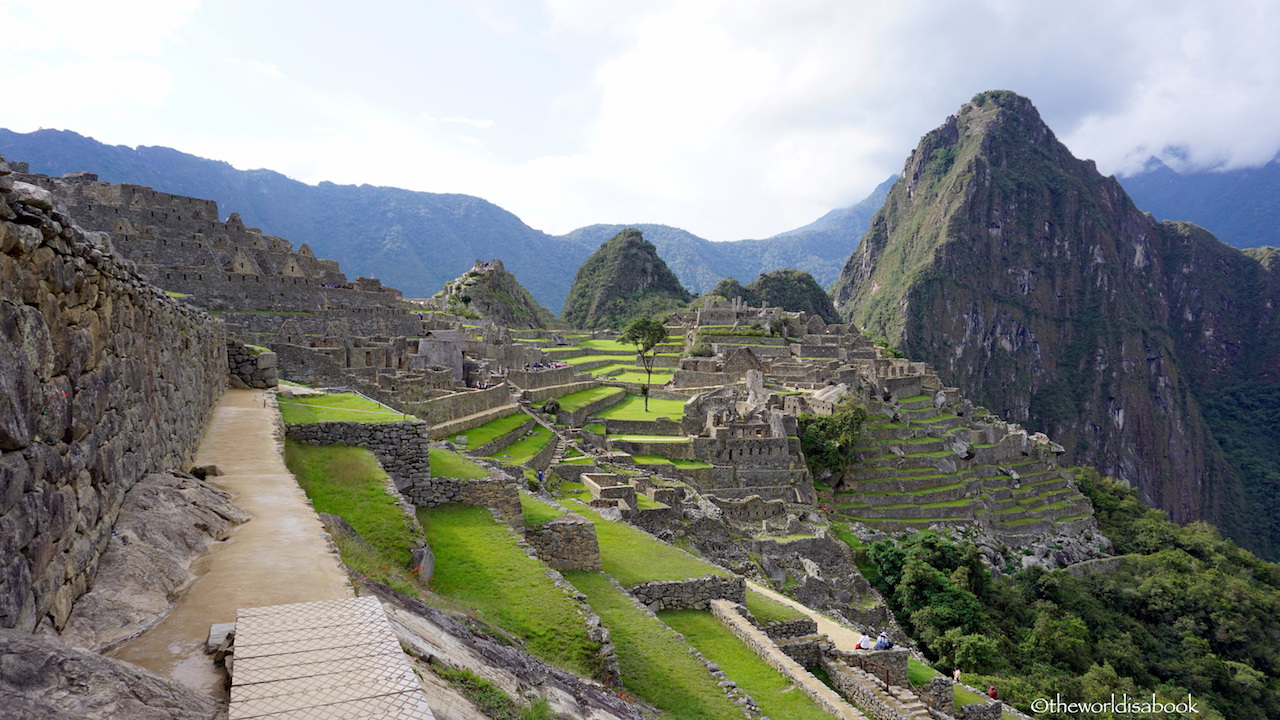
No visitors are allowed to enter without a tour guide on the first visit. Second visits don’t require a guide. But, you must show your previous Machu Picchu ticket or your tour guide name.
There were many tour guides around the bus ticket booth and at the Machu Picchu entrance. Most of them were wearing the same type of shirt saying they were certified guides authorized by DIRECETUR (Regional Directorate of Foreign Trade and Tourism) with identification cards. We talked to a couple of them and chose one who spoke great English, enthusiastic personality and one we were comfortable with.
They limited the group size to 16 people. Our group only had 14 people and we each paid $12. Private tour guides are also available and better for families. The most popular guided circuit tour lasts about 2.5 hours.
The bus ride up to Machu Picchu is quite nerve wracking especially if you’re afraid of heights or have motion sickness. Our ride up to the mountain was scenic through the winding roads and took about 40 minutes one way. It was amazing to see the Machu Picchu ruins from afar as we rounded a corner.
There is also an option to hike up to Machu Picchu from Aguas Calientes. The steep trek takes about 1.5 hour one way on a well-marked road and on most areas along the same road as the bus. We saw some young travelers along the way.
Touring Machu Picchu
The Incas built Machu Picchu around 1450 AD on an area between the Huayna Picchu and Machu Picchu mountains. It is located 7,970 feet (2,430 meters) above sea level with the roaring Urubamba river below it and an amazing alpine panorama surrounding it.
Hiram Bingham III, who was a Yale University professor and explorer rediscovered the Inca site in 1911 in his quest for Vilcabamba (the last Incan capital). He is credited for telling the western world of its existence in a best-selling book.
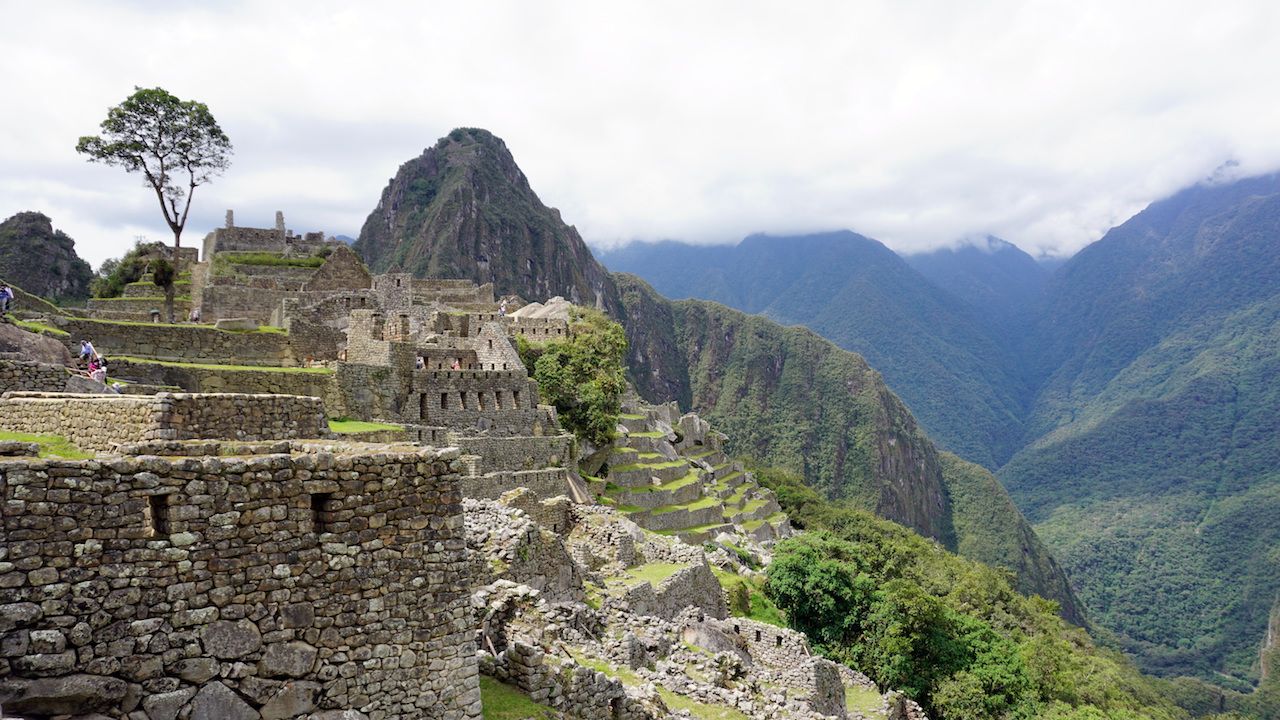
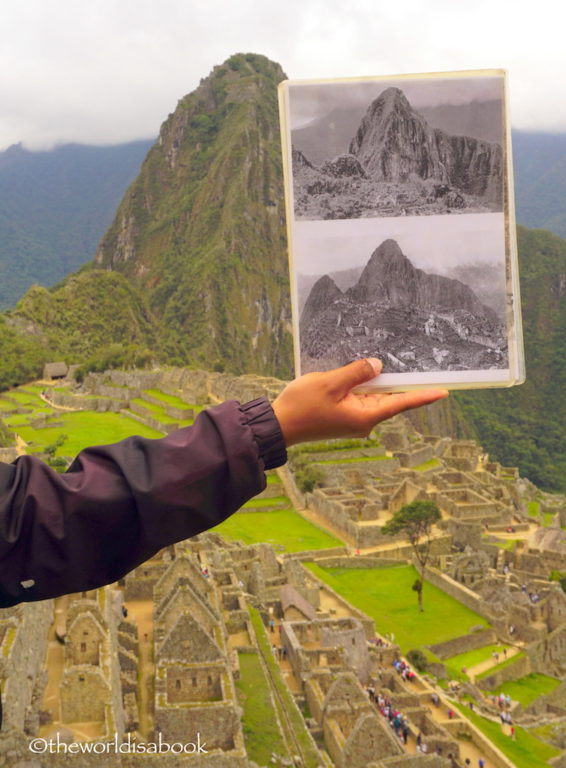
Though, about 200 structures were still largely intact. This was largely due to the Incas using large granite stones, perfectly cut and shaped and put together to fit perfectly like puzzle pieces without the use of mortar. It was incredible to think how they assembled these structures without the use of modern equipment and using only simple tools. The Incas’ stonemasonry skills were beyond amazing.
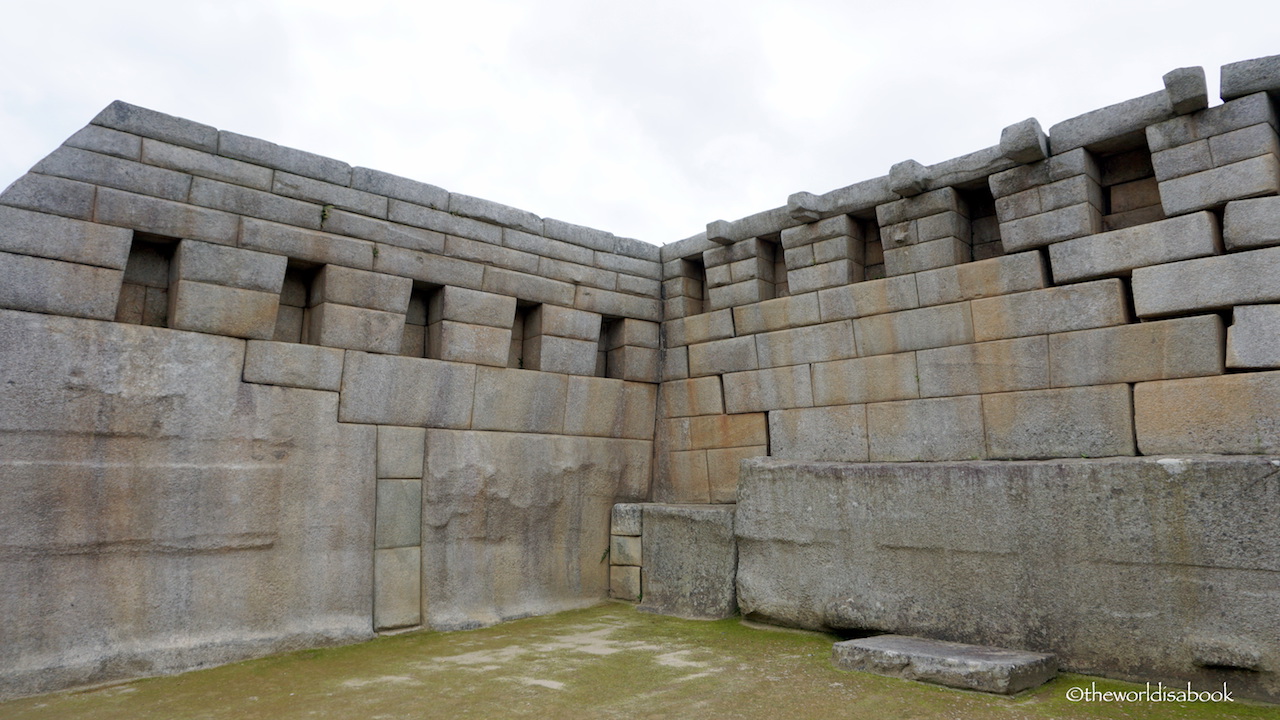
How did they get these stones to build these structures? There was actually a quarry inside Machu Picchu which was repeatedly used. Look for a clutter of large boulders near the open green square or plaza that almost look out of place.
Heavy stones were carved right out of the rock eliminating long distance transports. The large stones were transported around the sites using levers and ropes while llamas were used to move smaller stones.
Speaking of these adorable creatures. The Machu Picchu llamas weren’t hard to find here. We met one as soon as we entered the complex. These residents were grazing at many places around Machu Picchu mostly ignoring the tourists trying to take selfies with them.
We got pretty lucky with these llamas photo bombing our touristy photos. This was actually one of the photos I really wanted to have of Machu Picchu. It was classic and timeless to have these llamas on the foreground. This particular one happened to be smiling for the camera too.
We got really lucky later in the afternoon as most of the llamas started walking to higher ground. My daughter was following them around to get a selfie. She got this favorite photo instead that a guide offered to take for her with the smiling llama.
The Complex
Many experts believe that Machu Picchu was intended to be a royal estate and the Incan emperor’s summer retreat. Pachacuti Inca Yupanqui, the Inca’s 9th ruler, was thought to have built Machu Picchu. Despite its partial wall, it wasn’t meant to be a military or defense fort.
These were some of the highlights and memorable structures of our circuit tour.
Machu Picchu was divided into different sectors. The agricultural sector was easy to spot with its many terraces along the hillside. These were most likely used for growing maize/corn, quinoa and potatoes. They also functioned as part of a drainage system.
The other was the urban sector with homes, royal enclosures, towers, temples and plazas. The urban zone was also divided into a lower and upper area. The zones were connected with stairways that were still in good condition. Some stairs were quite steep so a bit more challenging with younger kids in tow.
There was also a royal compound that included the emperor’s residence with his own private garden and bath/toilet. The right side was the residential area with interconnected houses. The public square, with its still very well maintained grass, was the site of many ceremonies and sacred rituals.
There were several terraces surrounding the plaza to hold the large crowds. Our guide demonstrated the very good acoustics and echo effect from one of these terraces.
The Temples
This important temple had a tower with a semicircular outer wall with a carved rock inside that probably served as an altar to honor the gods. It was thought to be the center of many religious and sacred ceremonies. Only Inca priests were allowed to enter this temple.
Some of the complex’s buildings were designed to interact with the stars and the sun. The temple’s two windows allowed the priests to see the sunrise during the summer solstice (December 21) and winter solstice (June 21).
During the winter solstice, a beam of light shines through the window and forms a rectangular beam of light on the altar rock. There is a natural cave underneath the tower which gets a ray of light during the solstice.
The Temple of the Three Windows, that’s also known as the Room of the Three Windows, was a rectangular building in the Sacred Plaza that overlooked the mountains. Its three windows were specifically built to align with the sunrise. The Incas also held ritual ceremonies here to keep the sun from returning everyday.
Machu Picchu was beyond impressive. It was easy to see why this magnificent Incan complex has become such a popular tourist attraction. Its history and architecture was very interesting and made us appreciate the Incas’ skill levels even more. This was one of the best trips we’ve ever taken and definitely one of the most memorable. Make that trip to Machu Picchu happen soon.
More Tips for Visiting Machu Picchu with Kids
- Buying Tickets: Ticket costs vary depending on what you want to do. The most popular option of only visiting the Machu Picchu citadel is $46 USD (as of June 2019)
- Reserve your tickets way in advance especially if traveling during the high season of May to October.
- Buy tickets through Peru’s Machu Picchu official site.
- Children under 8 years old are free to enter but must be accompanied with parents or adults and show proof of identity and age.
- Children ages 8 through 17 are considered students and qualify for a discount. But, these tickets can only be purchased in person in Cusco or Aguas Calientes. They can also be purchased at an authorized tourism agency but usually at a higher price. Tickets must be purchased with a passport. Minors must be accompanied by parents or adult proxies.
Cusco Ticket Office: Ministry of Culture Calle Garcilaso Casa Garcilaso on Calle Garcilaso s / n – Regional Historical Museum and Maruri Street 340 ; Mon- Sat 7AM – 8 PM
Aguas Calientes Ticket Office: Machu Picchu Cultural Center (Regional Directorate of Aguas Calientes Office). Address is Av. Pachacutec (just off the main square), and hours are 5 AM-10PM every day. This was where we bought our tickets on the day of our visit. No line and easy process but it was late November during their low season.
- If you’re traveling during the high season and traveling with kids, you may want to get tickets beforehand through travel agencies or when arriving to Cusco. We constantly looked at the official website to see how many tickets were still available so we knew we could wait until Aguas Calientes to buy our tickets.
- Don’t forget to bring passports. They are required for entrance.
- Get to the train station about 30 minutes before departure. There are waiting rooms at both stations.
- The following items are prohibited into Machu Picchu. They do check bags.
- Selfie sticks
- Drones
- Tripods
- Single-use plastics like bags and straws
- Plastic water bottles. Refillable water bottles are fine (amazon link to
- No backpacks or bags bigger than 15 x 13 x 7” or 40 x 35 x 20 cm are allowed into Machu Picchu. Storage lockers are available in Aguas Calientes or before the Machu Picchu entrance. Our day backpacks from Eddie Bauer were put to good use here and was the perfect size for snacks and sunscreen.
- Wear comfortable shoes. There are many uneven steps and unpaved trails around the complex.
- If you’re traveling with smaller children, bring baby carriers. Strollers of any kind are not allowed inside Machu Picchu.
- Eating inside Machu Picchu is not allowed. We brought some snacks and food we bought from Aguas Calientes to eat during our break outside and before entering again. We recommend bringing your own food and drinks as prices were a bit high and selections were limited while in Machu Picchu.
But, there were a couple of eateries outside the entrance where the buses arrive and depart. The Tinkuy restaurant inside the Sanctuary Lodge Hotel offers sit-down dining with a buffet option. The Snack Bar seats about 60 people and has hot and cold food options.
- The restrooms are located outside of the citadel and by the ruins entrance. They charge 2 soles ($0.61 USD) and payable to an attendant. Please keep in mind that tours are at least 2.5 hours.
Be sure to let the kids use the restrooms beforehand since it can be a long walk back to the entrance. With the new rules, once you leave the complex, you can’t go back in unless you buy another ticket.
- There was a small area for visitors to stamp their passports with a commemorative Machu Picchu stamp. Look for a small stand after coming out of the Machu Picchu trail exit and by the Snack Bar.
- Altitude adjustment. Machu Picchu isn’t as high up as Cusco but there is still some adjusting to the altitude at over 7,000 ft. If you’ve spent a few days in Cusco and the Sacred Valley beforehand, the effects will be minimal. Stay hydrated at all times.
- The buses going back down to Aguas Calientes can get quite crowded especially around the early afternoon. This was the line at one point. Pack some patience.
- If you can’t stay the night in Aguas Calientes, save some time to walk around the town and especially the market by the train station. There were many vendors selling colorful wares, textiles and souvenirs.
- Cost per person (as of June 2019) Adult. Prices subject to change.
| Item | Price |
|---|---|
| Roundtrip Train – Ollantaytambo to Aguas Calientes (Peru Rail Expedition) | $126 |
| Roundtrip bus ticket from Aguas Calientes to Machu Picchu | $24 |
| Machu Picchu Entrance ticket for citadel only; Students (ages 3-17) $23 | $46 |
| Tour Guide fees (add $3-5 tip per person) | $12 |
- Children ages 3-11 are discounted at 50% of regular price.
- Add extra cost for one-way Vista Dome train – $32 more than Expedition
- Add extra cost for train from Cusco/Poroy – $15 roundtrip
- This was our itinerary. Train schedules may change but you can get an idea of our timeline. We read that the fog/clouds clear up in the afternoon and there were lesser crowds so we picked a later entrance. We noticed that the crowds did thin out by the late afternoon.
| Time | Activity |
|---|---|
| 8 AM – 9:24 AM | Ollantaytambo to Aguas Calientes on Peru Rail Vista Dome |
| 9:30 AM – 11 AM | Get tickets at Aguas Calientes Machu Picchu Cultural Center, book a guide and bus tickets, walk around town, get food/snacks |
| 11 AM – 11:40 AM | Bus from Aguas Calientes to Machu Picchu |
| Noon – 4 PM | Visit Machu Picchu Citadel |
| 4 PM – 4:40 PM | Machu Picchu Bus to Aguas Calientes |
| 4:40 PM – 5:40 PM | Walk around the craft market by train station |
| 18:20 – 20:05 | Aguas Calientes to Ollantaytambo train on Peru Rail Expedition |
*Add in extra time for catching the train to/from Cusco/Poroy which was about 1.5 hours.
*Have you visited Machu Picchu?
Pin it for later!
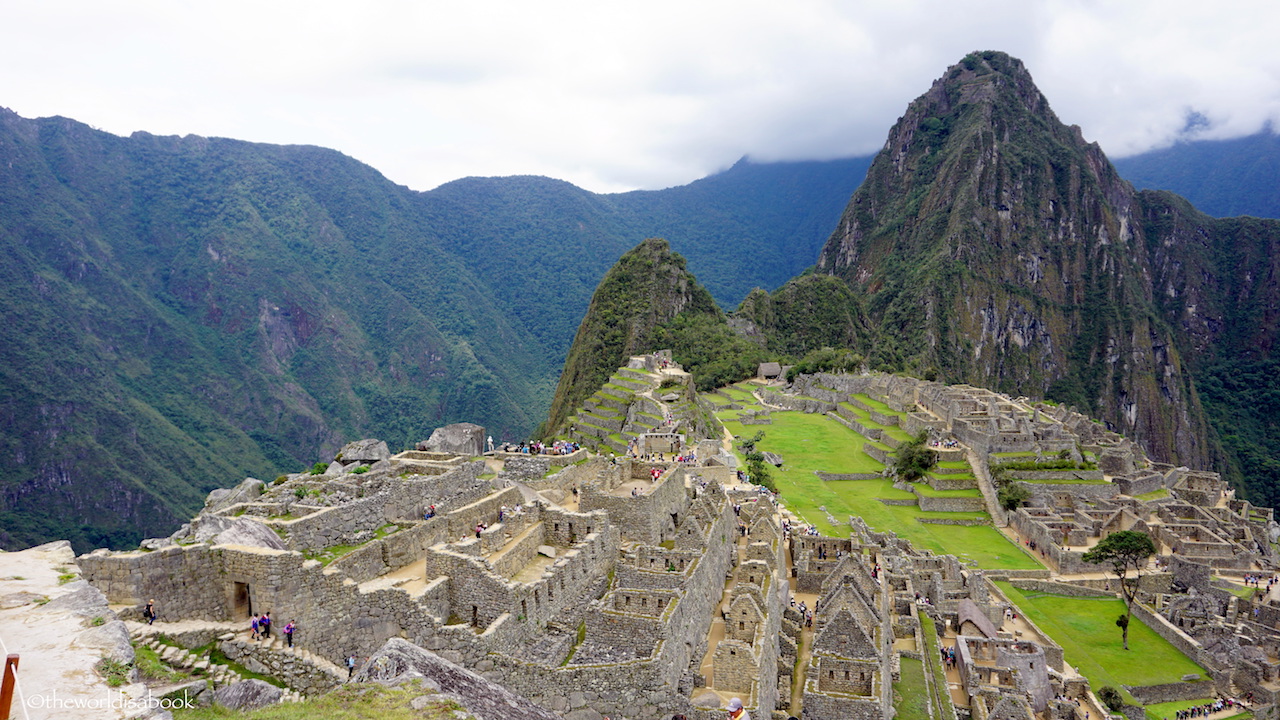
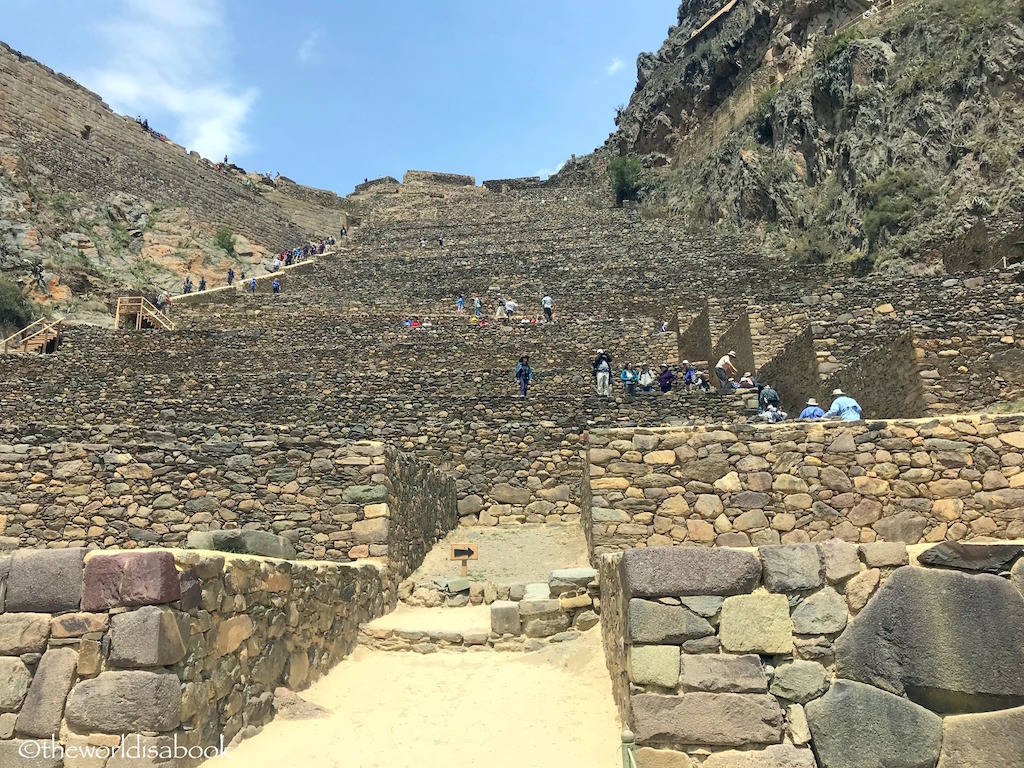
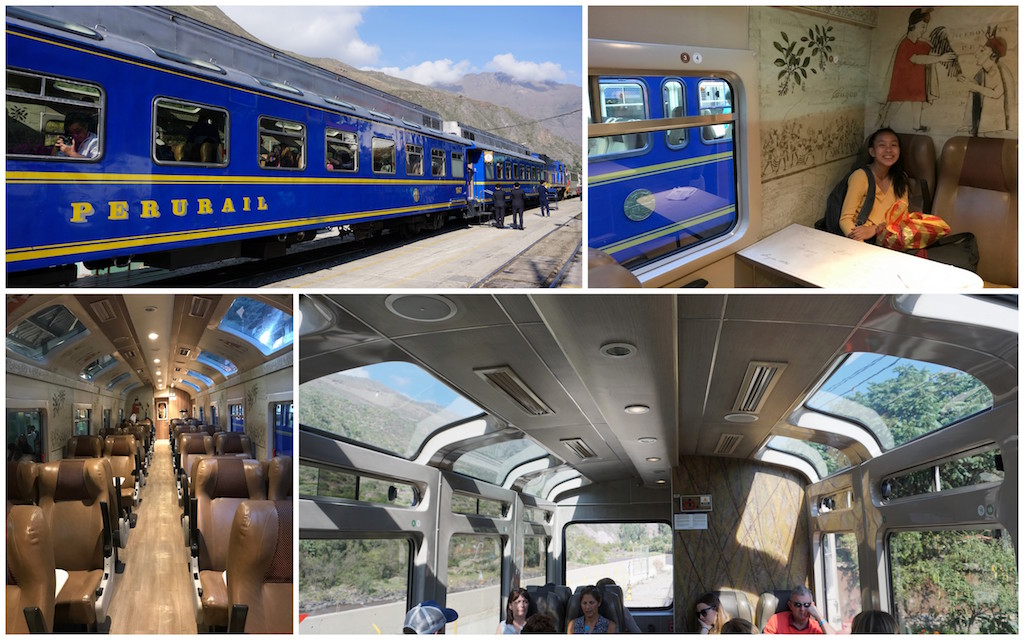
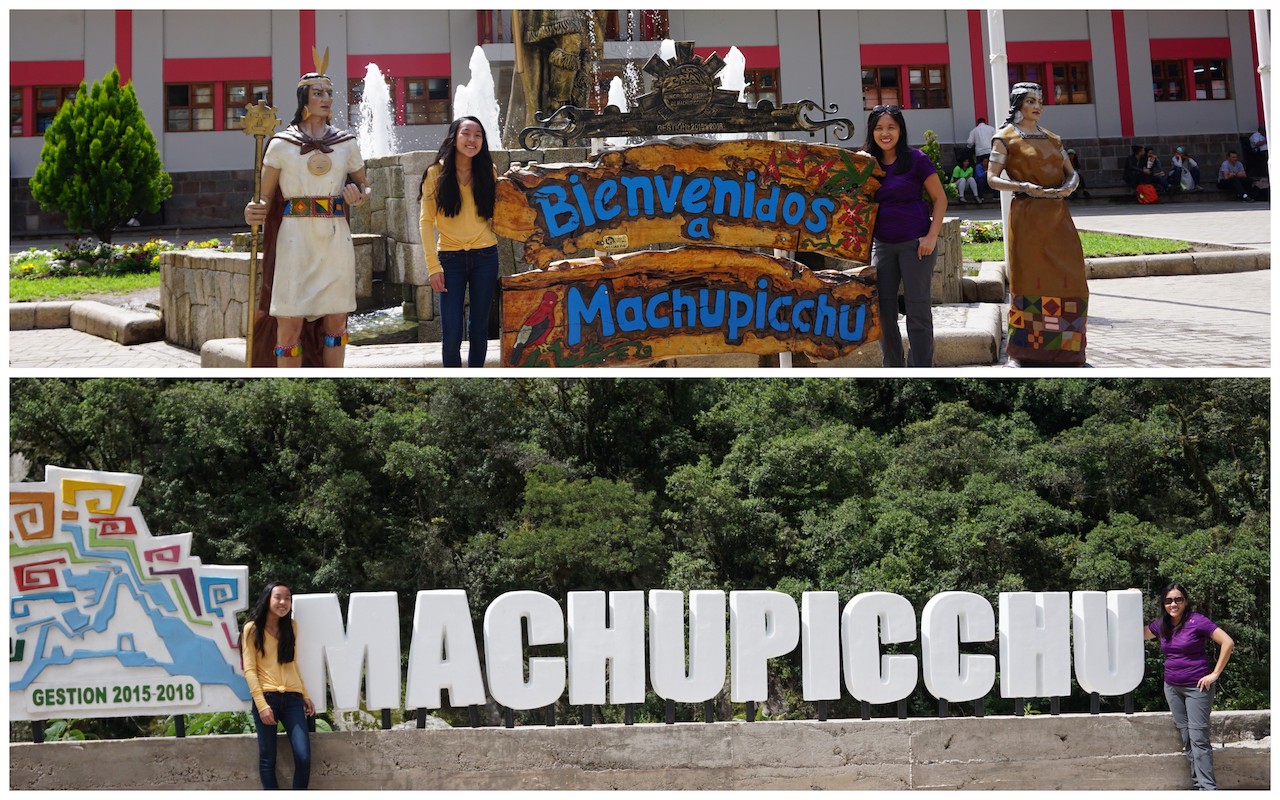
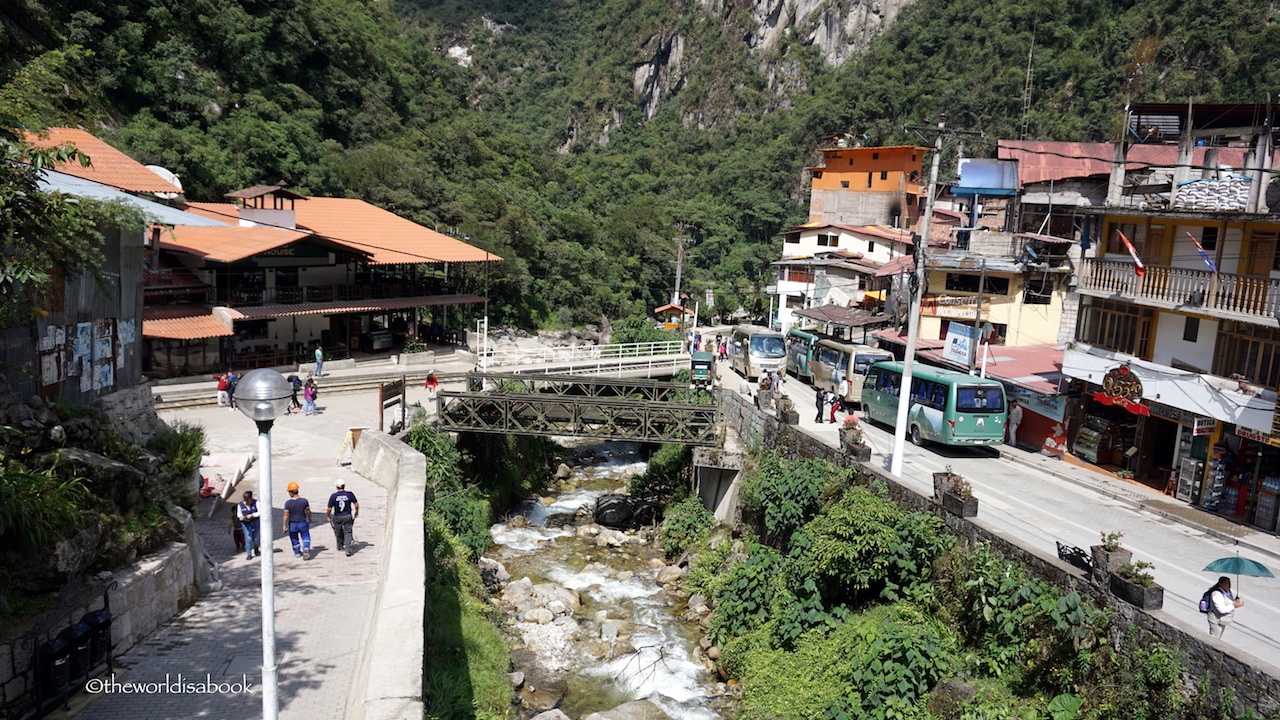
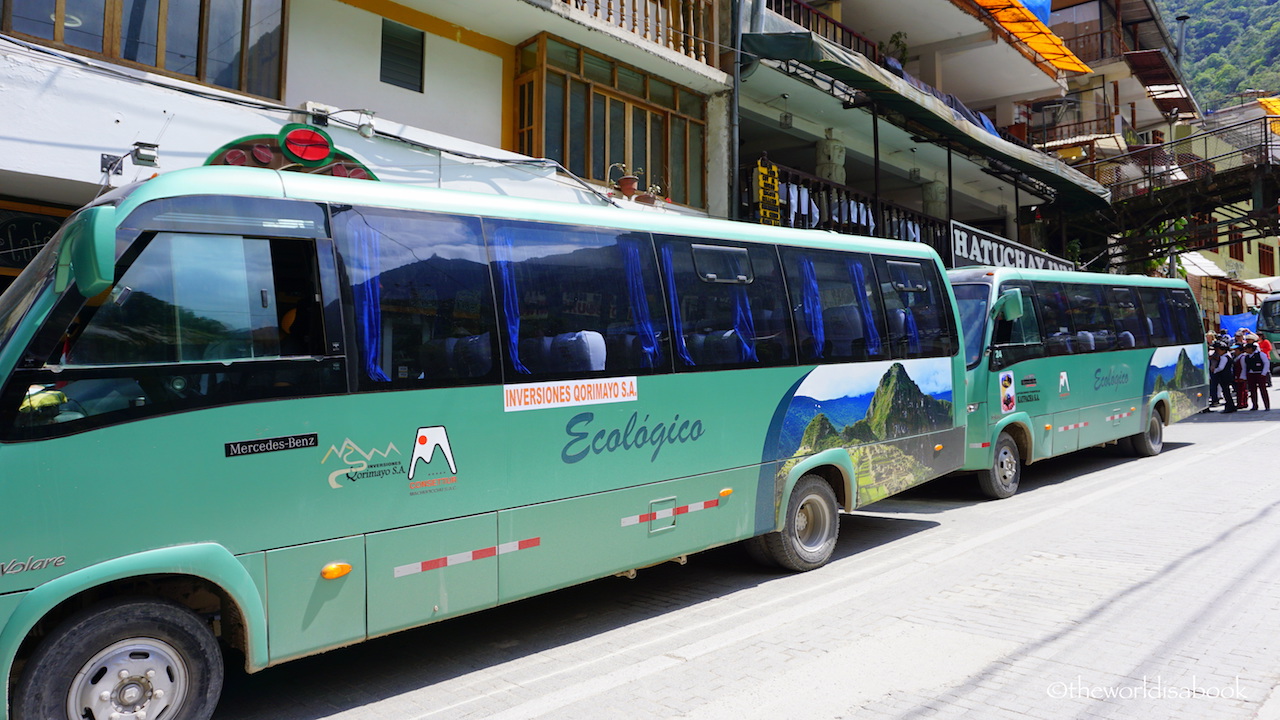
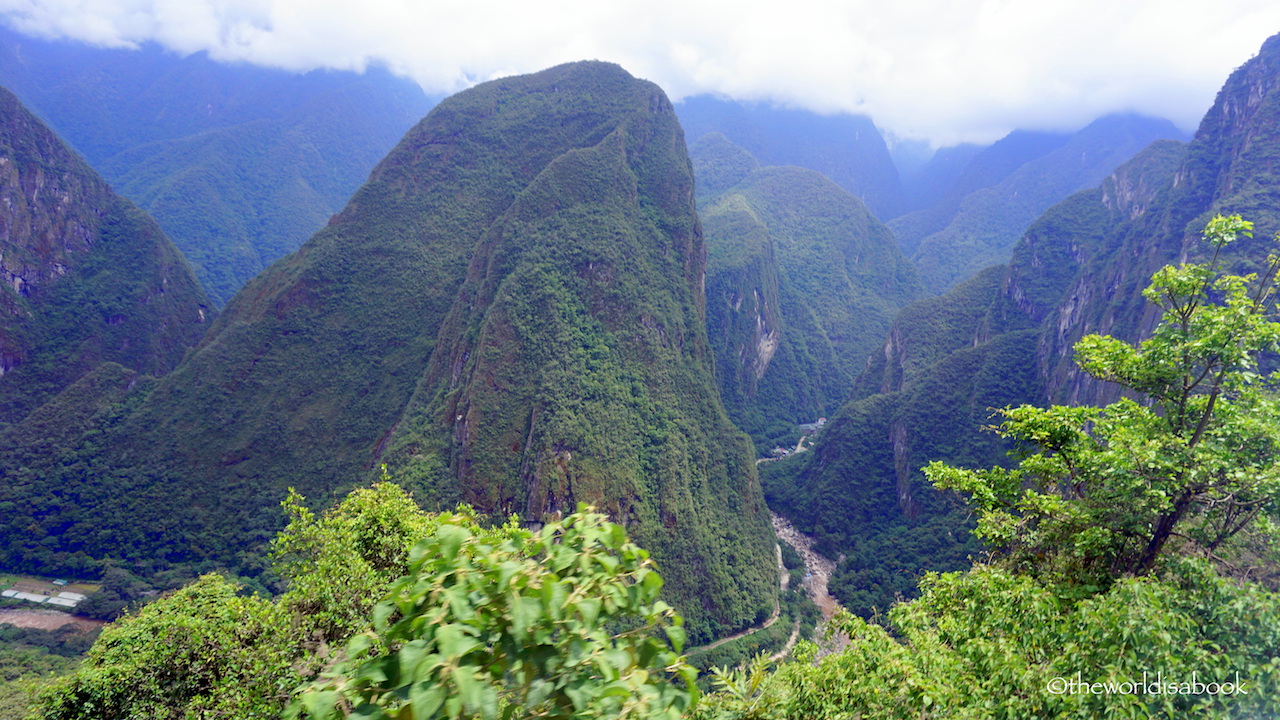
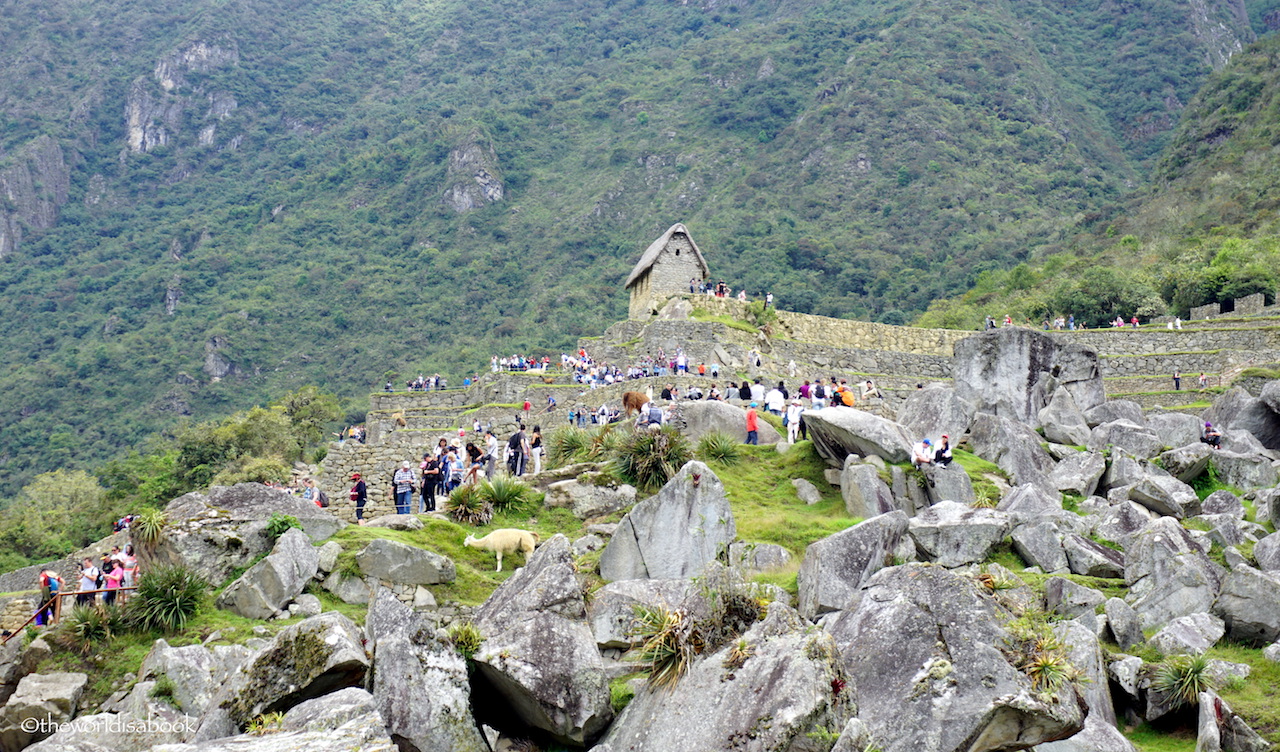
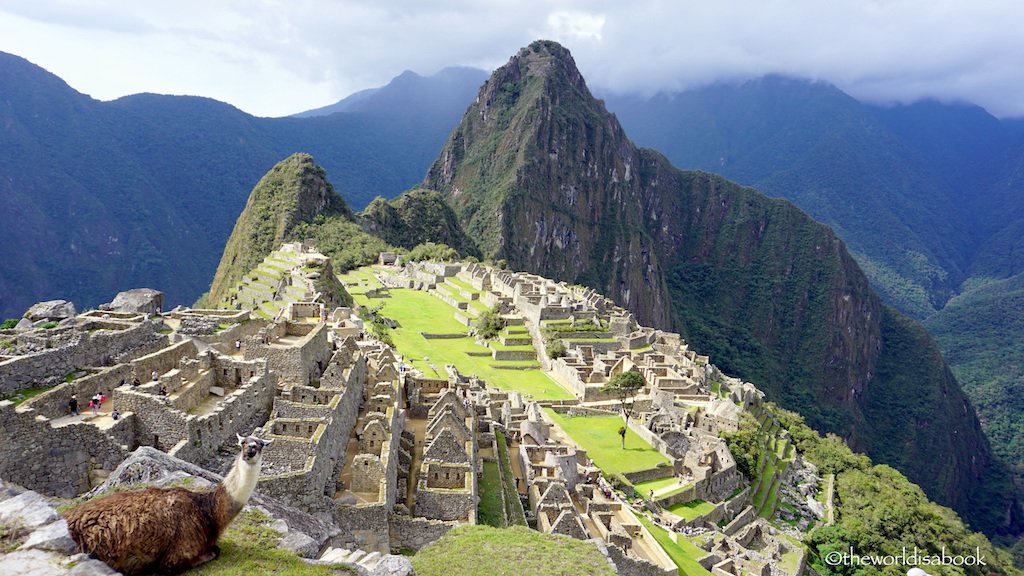
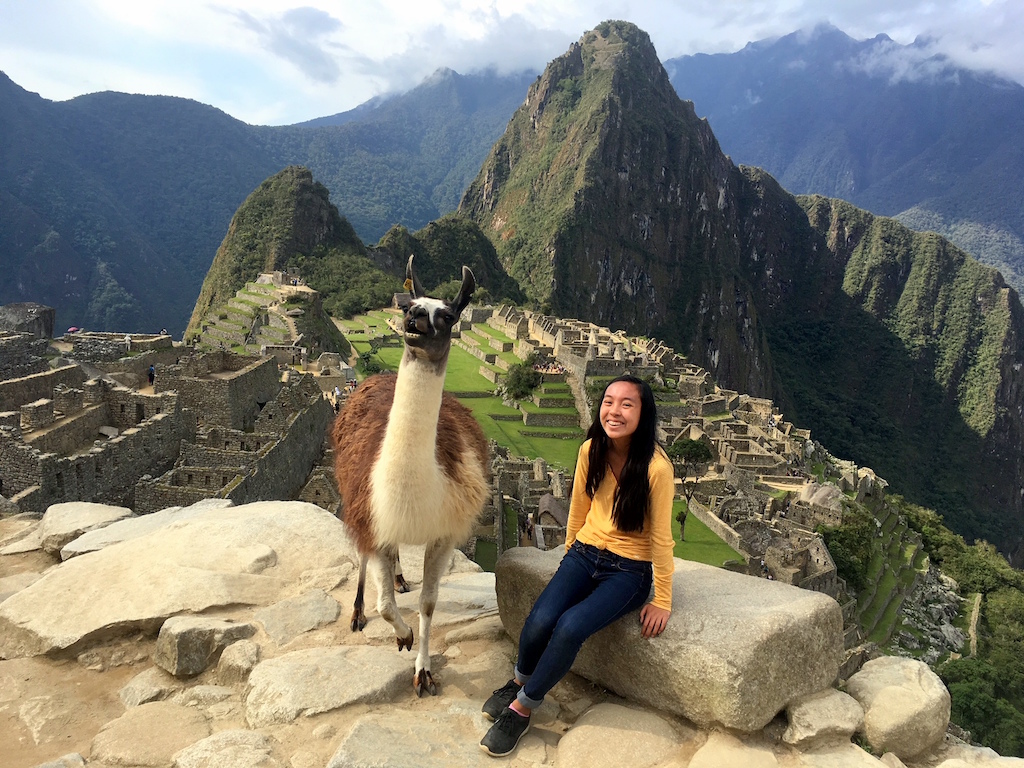
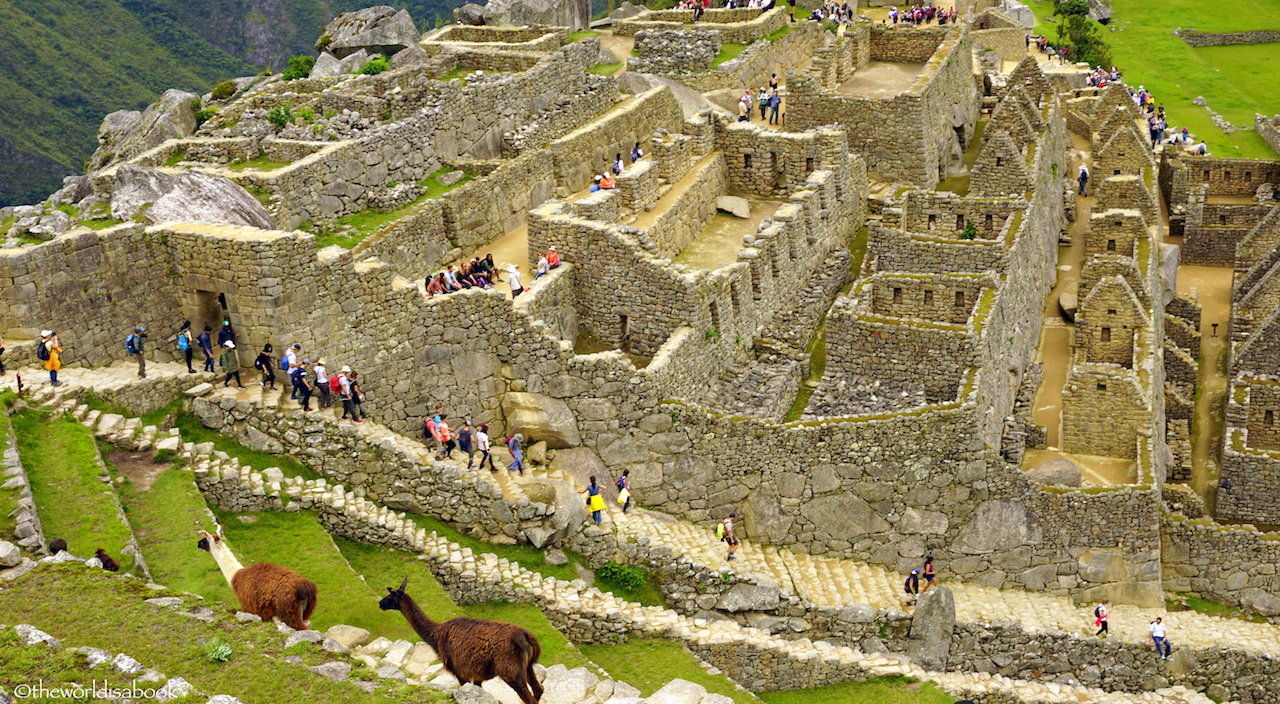
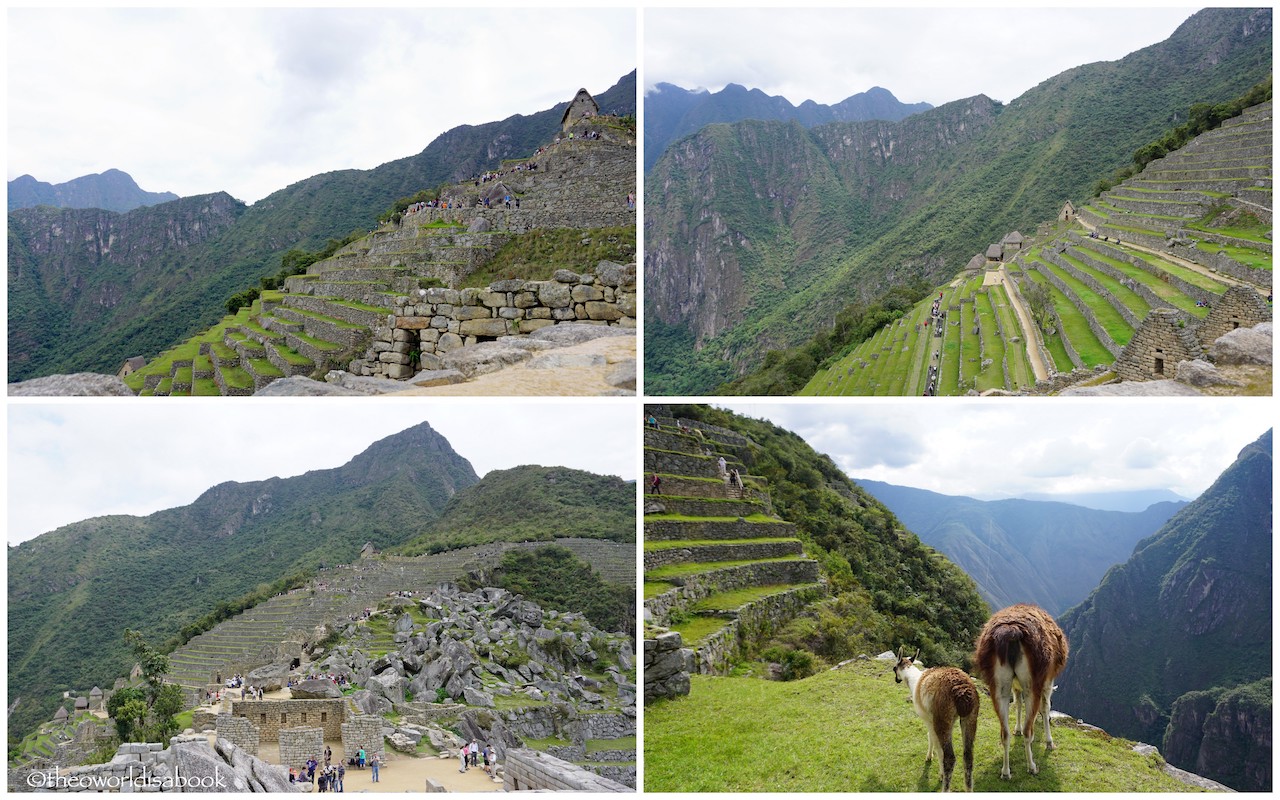
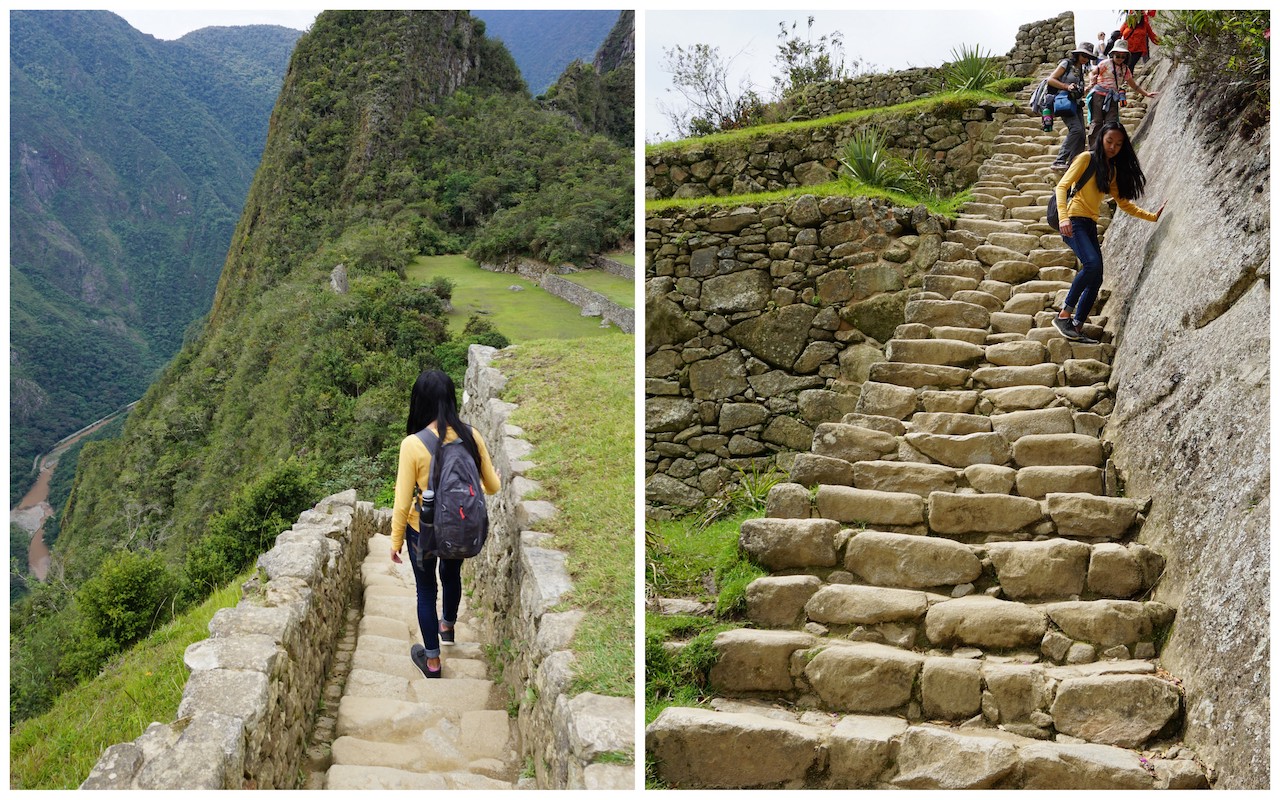
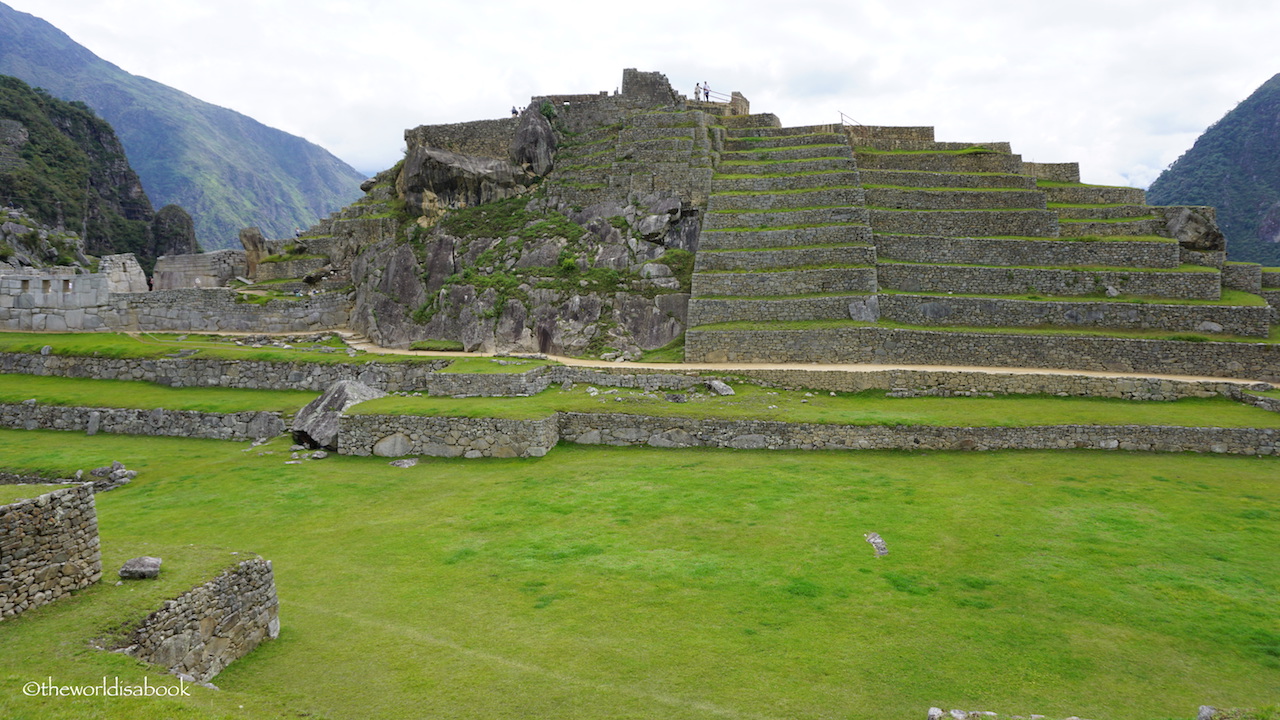
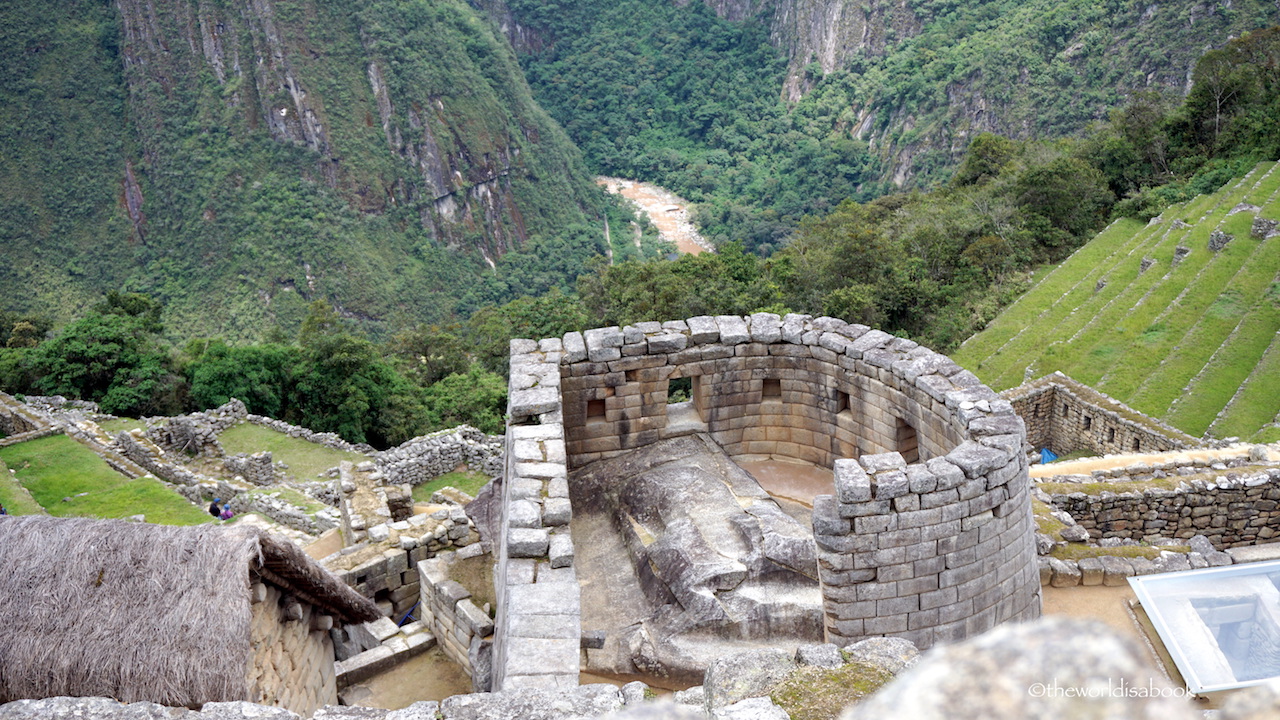
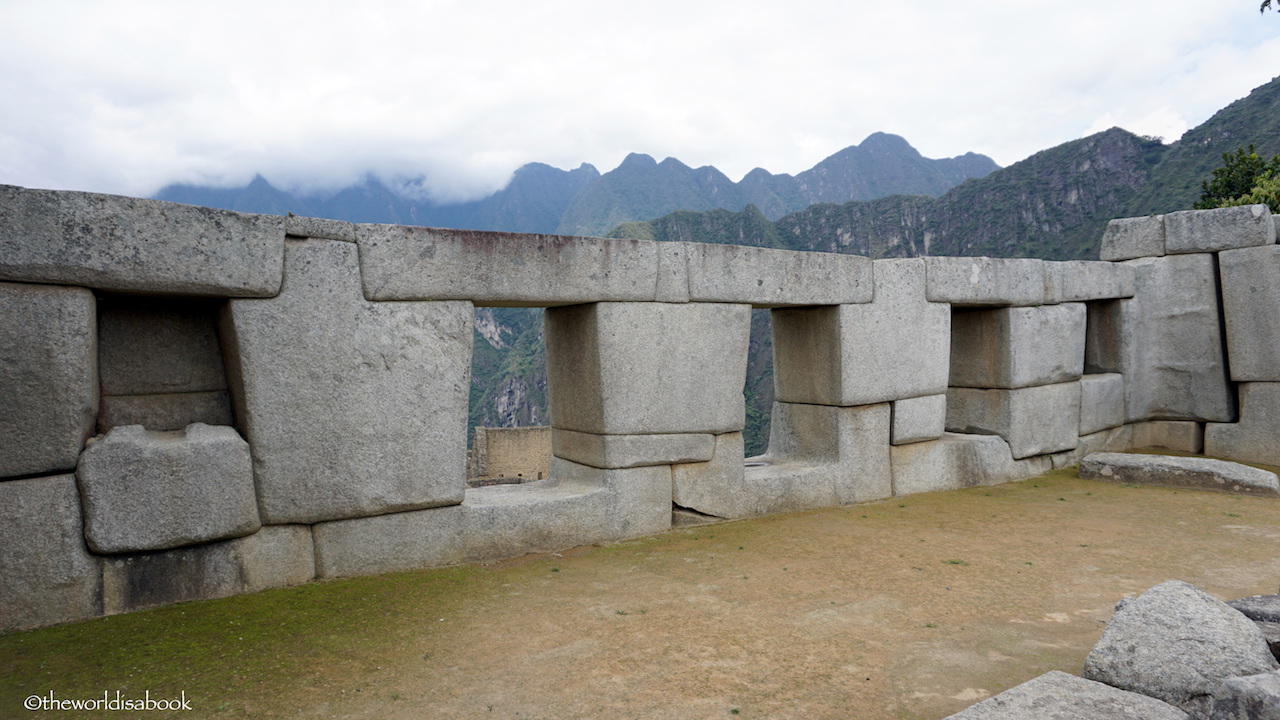
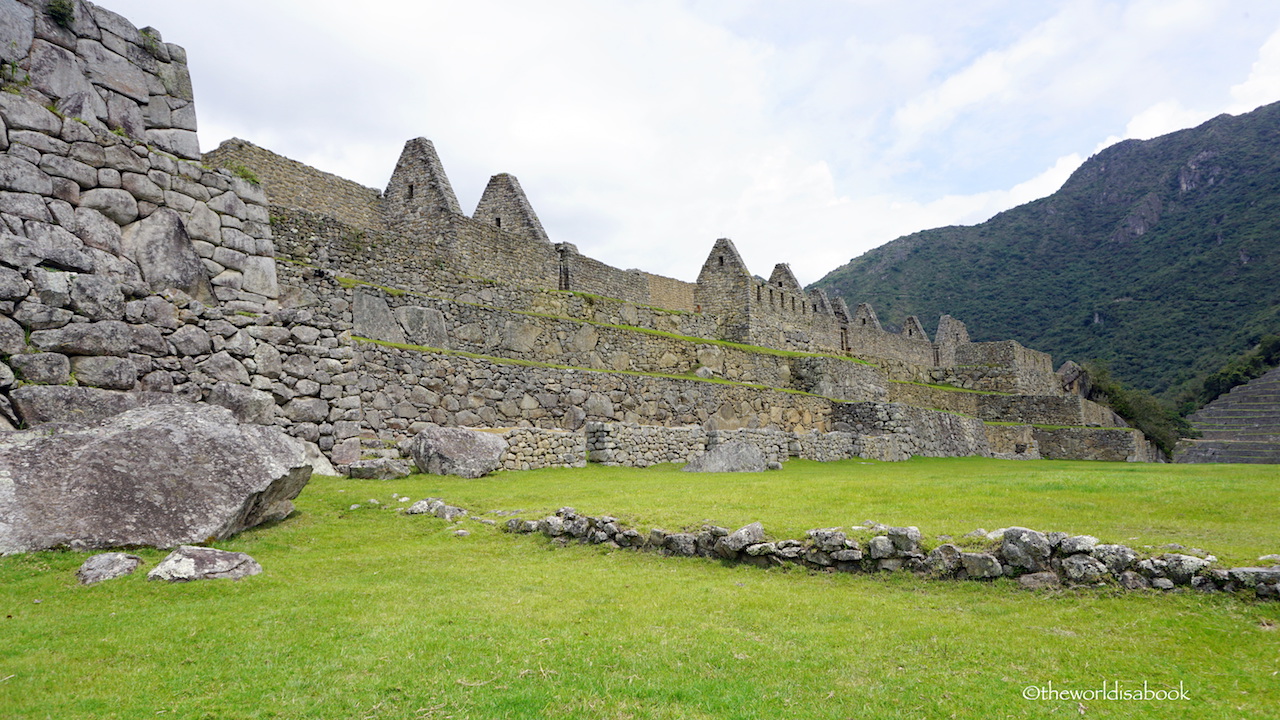
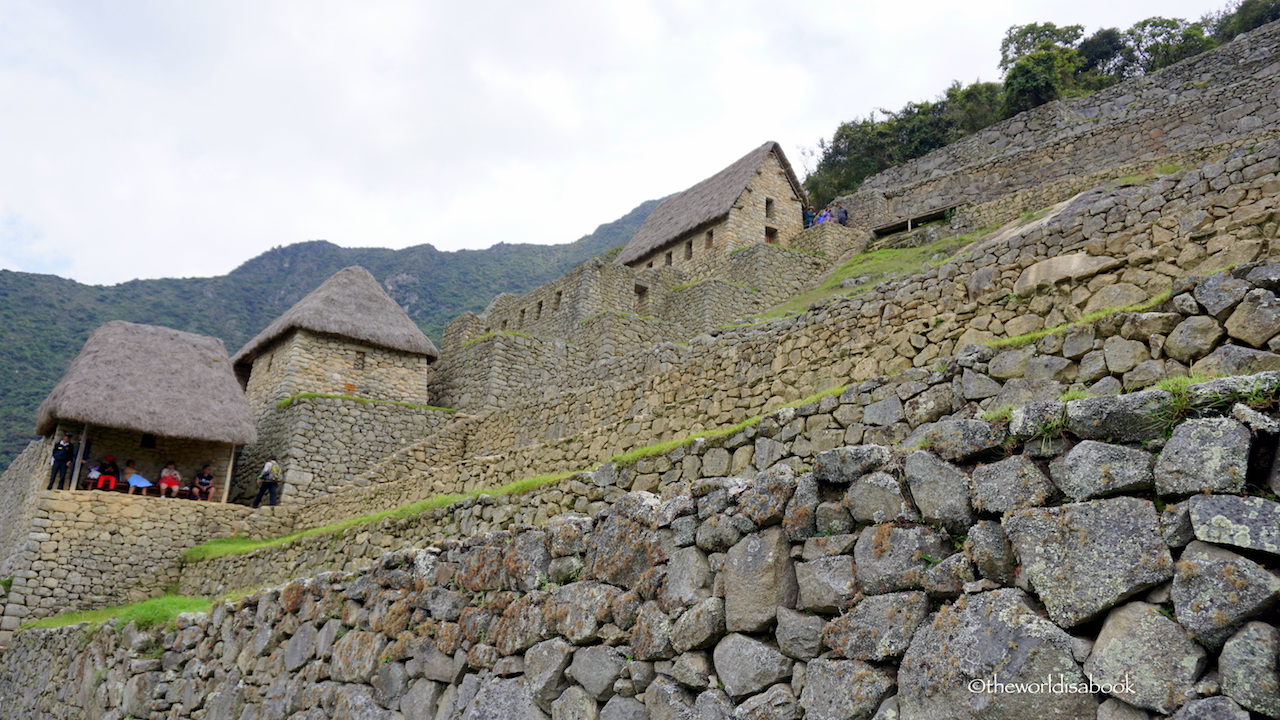
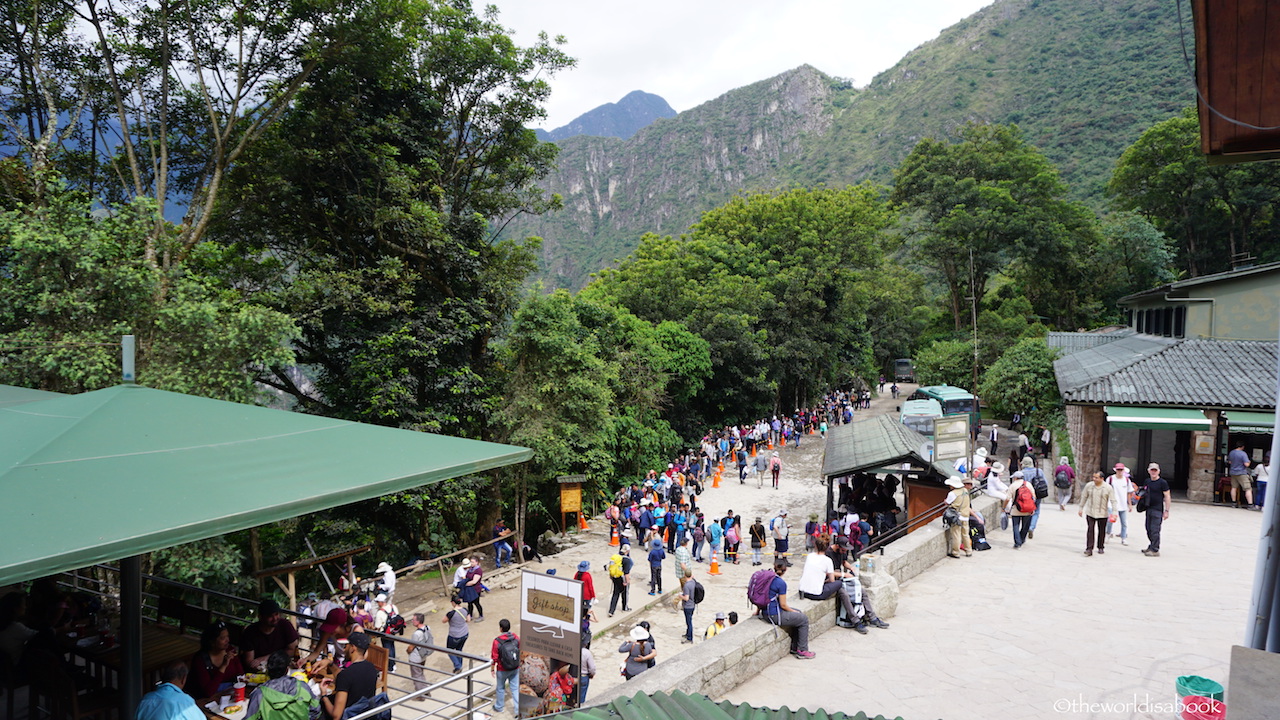
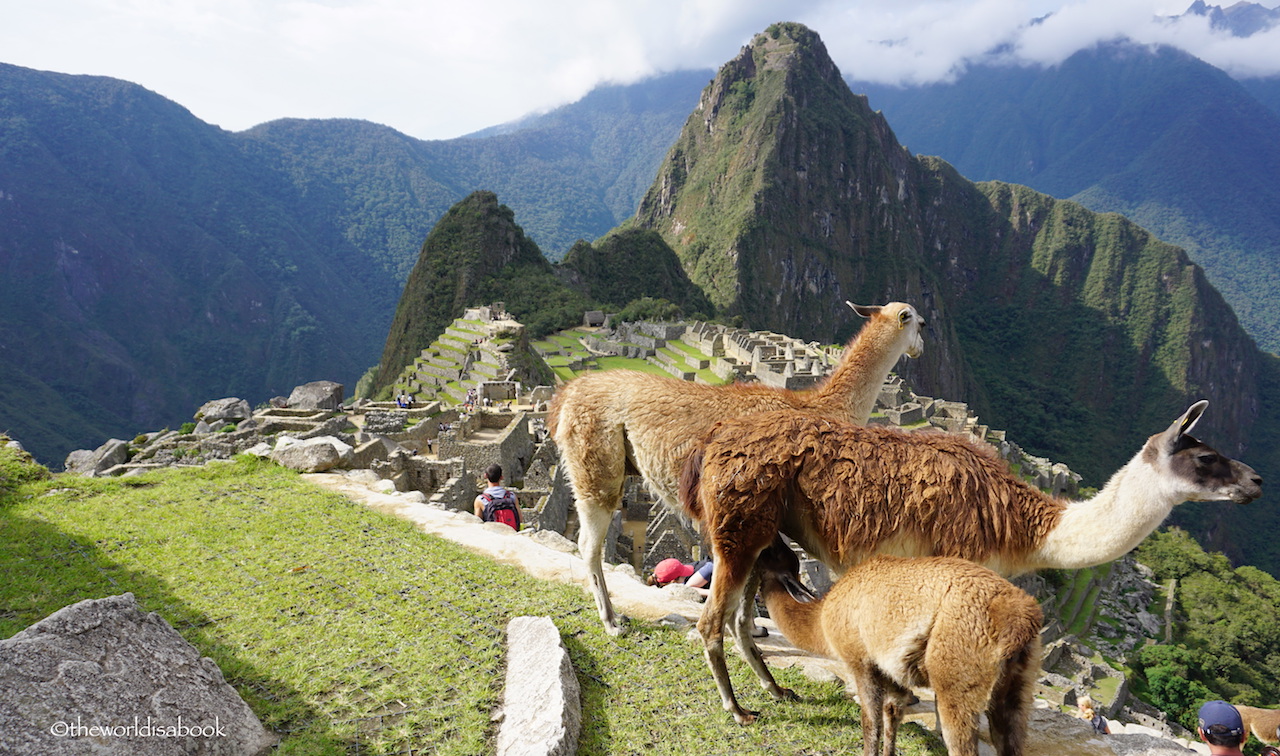
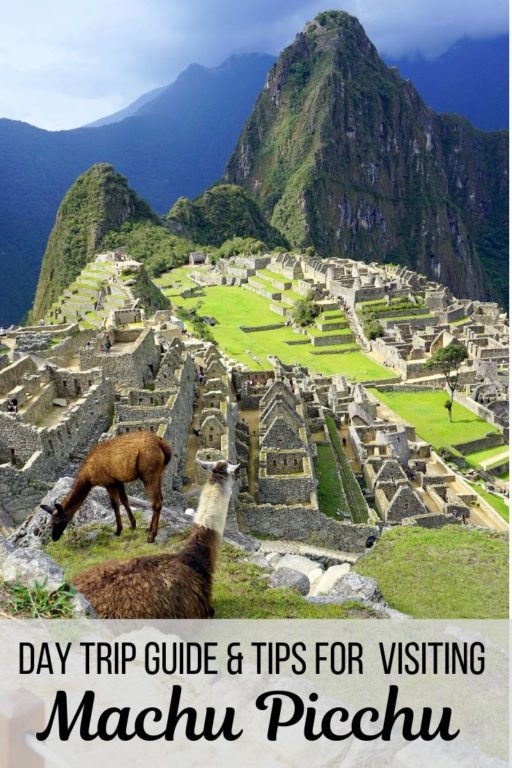
Fantastic photos! I’m afraid that it will be quite awhile before I make it to Machu Picchu so thanks for taking me along.
I am just discovering your blog. I am looking for information and It is the first time I see such a post about Machu Picchu: excellent about everything with details, timetables and very inspirational photos! Thank you very much! It will help me a lot! I wish you a nice summer!
Hi,
Our family is planning a trip to Machu Picchu this August and are also staying at the Picaflor Tambo. We have the same timeframe as yours for our day trip to Machu Picchu, which means entering the site in the afternoon (around 1pm) and arriving back at Ollantaytambo at 8pm. Did you find the walk from the train station to the hotel safe at night? Would you recommend against taking a later train arriving after 10pm? Also, did you find Machu Picchu crowded in the afternoon? Thank you!